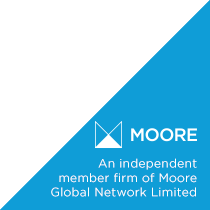Coronavirus - when can business debt become a personal obligation?
Business support packages and tax deferrals schemes have been a lifeline for the majority of businesses during the pandemic, with the Coronavirus Job Retention Scheme being one of the most significant.
At last count, on 20 September, HMRC confirmed that 1.2 million employers had made use of the scheme which equated to a claims value of £39 billion. While the last eight months have seen an unprecedented level of business support from the Government, it’s important to be aware of a key piece of legislation that came into force recently regarding the personal liability of company directors and their business for HMRC debts.
Temporary insolvency changes
At the start of the pandemic the Government introduced a number of temporary amendments to insolvency legislation to give businesses the breathing space they needed at this challenging time. Amongst the changes temporarily introduced were the suspension of liability for wrongful trading (now back in force with effect from 1 October 2020), the introduction of new moratorium provisions to give companies additional protection and breathing space, and restrictions on winding up petitions where the debt is unpaid due to the impact of the virus.
One piece of additional, unrelated legislation which has recently come in to force which has a potentially significant impact, and which has received far less attention than the assistance outlined above, is the introduction of the threat of personal liability for directors and others connected with a company for the HMRC debts of the business.
Personal liability for directors and others for HMRC debts
The Finance Act 2020 introduces those provisions and is aimed principally at deterring individuals who have taken advantage of the insolvency legislation to ‘phoenix’ a business from one company (or limited liability partnership) to another, whilst leaving unpaid HMRC debt in the insolvent company that has been left behind. In circumstances where there is a pattern of this outcome, directors, shadow directors and other individuals connected with the business could find themselves jointly and severally liable for the HMRC debt of both the failed businesses and the new company.
Joint Liability Notice
If an individual has been involved in two or more companies or LLPs which have been the subject of insolvency proceedings, and they are currently carrying on the same or similar business activity through a new entity, a Joint Liability Notice ‘JLN’ may be issued. The result of which can be the personal liability of that individual for not only the tax liabilities of the new company (for a period of five years from the date of the JLN), but also the tax liabilities of the previous entities, even where those may have been dissolved.
HMRC as an active creditor
There are a number of limits to the use of a JLN – the involvement with previously failed entities must have occurred within a five year period prior to the date of the JLN, and the HMRC liabilities of the failed companies must represent more than 50% of their unsecured debt, however the introduction of these provisions, and the reintroduction of HMRC’s preferential status in insolvency scenarios, demonstrates a contrast to the well-publicised support provisions above. They also illustrate a shift towards HMRC as a creditor more actively seeking recovery in insolvency scenarios, particularly where HMRC represents a majority of the unsecured debt and there is evidence of ‘phoenixism’.
The full impact of these changes and how frequently JLN’s will be used, remains to be seen. However, they have a potentially significant personal impact, and they highlight the importance of directors taking professional advice as early as possible when faced with signs of financial distress, as well as the potentially hidden dangers that these scenarios can pose.
Having spent the last 20 years dealing with insolvent companies and individuals, directors, creditors and other stakeholders, I have frequently encountered frustration at times within all of these groups at the perception of a lack of teeth in historical measures which don’t adequately tackle the abuse that these provisions are designed to deter.
A deterrent in the future
Whilst there are many situations where the transfer of a business for fair value to a new entity may represent the only viable solution to extract some value for the creditors of an insolvent company, I suspect the threat of personal liability in circumstances where that situation has been repeated, at the apparent cost of HMRC, may well act as a deterrent to the abuse that competitors, creditors and those in the insolvency profession frequently reference.
Here to help
If you’re experiencing any cash flow issues or would like to discuss anything covered in this blog, please do not hesitate to get in touch for an initial chat. Contact me, Graeme Bain on Graeme.Bain@jcca.co.uk or another member of our Restructuring Team.



